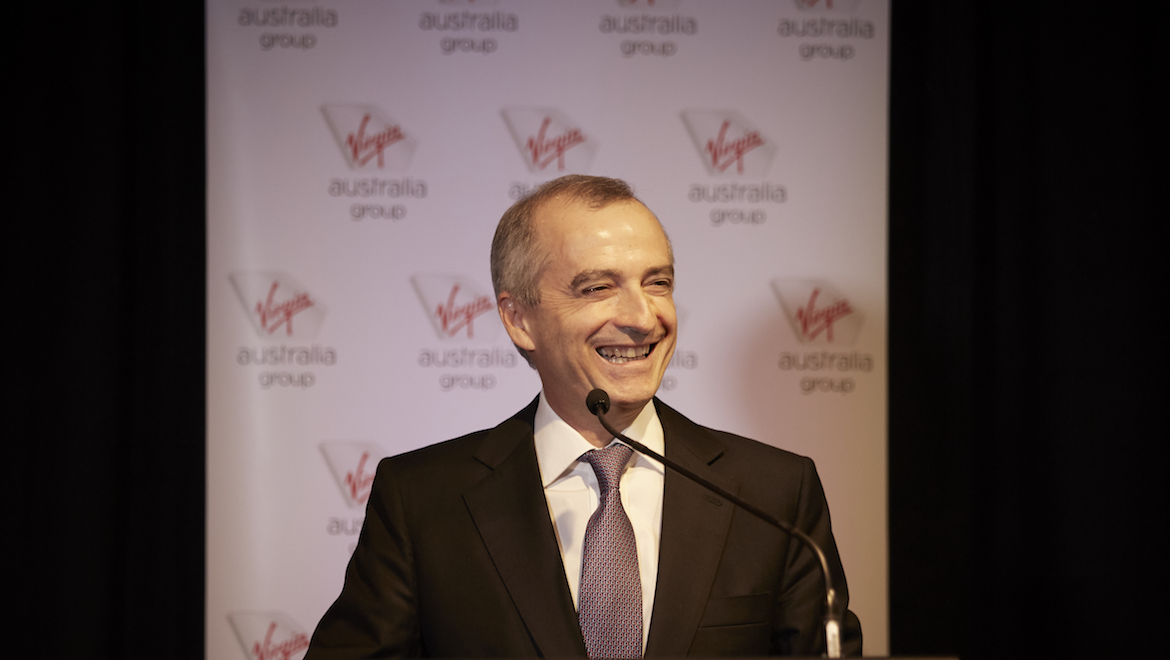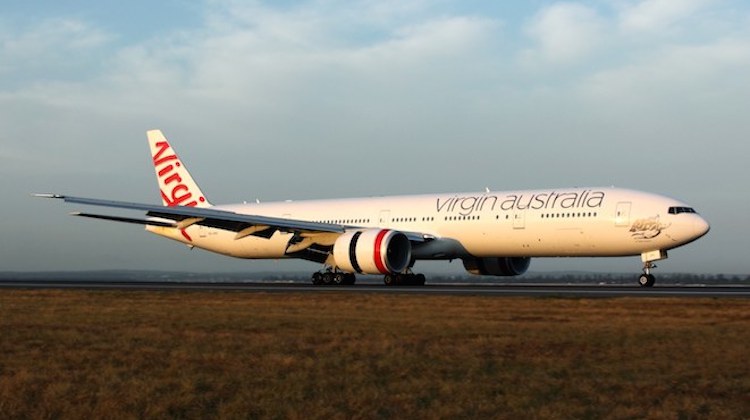Virgin Australia has reported a return to profitability in the first half of 2018/19 led by ongoing improvement in its domestic business and despite the burden of higher fuel costs.
The airline group said net profit for the six months to December 31 2018 came in at $54.8 million, compared with a loss of $10.3 million in the prior corresponding period.
Revenue rose 10 per cent to $3.1 billion, Virgin Australia said in a regulatory filing to the Australian Securities Exchange (ASX) on Wednesday.
Virgin Australia chief executive John Borghetti, delivering his last financial results before his replacement Paul Scurrah takes over in March, said the 2018/19 first half profit was achieved following a “significant period of investment and repositioning”.
“We’ve made solid progress in strengthening the financial foundations of our business,” Borghetti said in a statement.
“Today’s results continue to demonstrate the on-going success of our cost transformation program which is improving cash flow and reducing financial leverage to deliver sustainable profitability.”

Underlying profit before tax, which removes one-off items and was regarded as the best indication of financial performance, rose 37.1 per cent to $112.3 million.
The figure was above the 20 per cent improvement Virgin Australia forecast in October 2018 and the highest underlying profit before tax result in 10 years.
“The result was driven by record performance in the Virgin Australia domestic business, supported by stable market conditions, disciplined capacity management, continued effective cost control under the Better Business Program and stronger passenger yield,” Virgin Australia said.
The airline group, which includes the Virgin Australia and Tigerair Australia operations, said fuel costs rose $88.2 million in the half due to a weaker Australian dollar and higher oil prices.
Virgin Australia’s domestic operation, which is the biggest contributor to the company’s bottom line, reported underlying earnings before interest and tax (EBIT) of $176.7 million, up 26.8 per cent from the prior corresponding period.
Revenue per available seat kilometre (RASK), an industry measure of demand, rose 7.1 per cent.
Borghetti said the Virgin Australia’s domestic business was performing at an “all-time high”.
Meanwhile, Virgin Australia’s international business fell deeper into the red in the first half.
The airline’s international network, which comprised long-haul flights to Los Angeles and Hong Kong, as well as short-haul services to Denpasar, New Zealand and the nations of the South Pacific, reported an underlying EBIT loss of $12 million for the half, compared with an underlying EBIT loss of $2.7 million in the prior corresponding period.
The loss was attributed to start-up costs associated with launching Sydney-Hong Kong and trans-Tasman services during the half, as well as the impact of higher fuel prices.
International revenue rose 15 per cent to $666.1 million, while RASK improved 0.8 per cent and yields, an industry measure of average airfare per passenger, was up 3.4 per cent.
“Despite the impact of fuel prices, we’re encouraged by the strong performance on our international routes in terms of revenue generation, increased passenger numbers and higher yield as we continue to invest in growth opportunities in the region,” Borghetti said.

Virgin Australia’s third flying business is low-cost carrier (LCC) Tigerair Australia, which posted an underlying EBIT loss of $8 million in the half, compared with an EBIT loss of $8.3 million in the prior corresponding period.
Virgin Australia said the Tigerair Australia result was impacted by “accelerated depreciation costs” from the airline’s fleet transition program, where it is withdrawing Airbus A320s in favour of Boeing 737-800s.
The LCC reduced capacity, measured by available seat kilometres (ASK) by 11.5 per cent in the half, while the number of passengers carried fell nine per cent. This was due to a reduction in fleet size from 17 to 15 aircraft.
On a more positive note, RASK was up 13 per cent and yields rose 14.2 per cent in the half.
Borghetti said the withdrawal of A320s was being aligned with lease end dates alongside potential early returns to lessors where possible.
“We are restructuring the business, improving fleet utilisation and demonstrating a disciplined approach to capacity management,” Borghetti said.
“We are managing the fleet transition program in a prudent manner, weighing up lease end dates and opportunities for early aircraft exits where possible to optimise the transition process.
“During this transition period, we are very pleased that Tigerair has delivered strong unit revenue growth.”

Virgin Australia said its Velocity frequent flyer program had 9.5 million members at December 31 2018, up 10.5 per cent from 8.6 million a year earlier.
The company’s three-year Better Business program, launched in 2016, achieved net annualised cash flow savings of $355.3 million in the half and was on track to meet its $400 million target by the end of the 2018/19 financial year.
The company said a new three-year effort to improve efficiencies would commence in 2019/20 and target $300 million of net annualised cash flow savings.
The airline group did not provide specific earnings guidance for the rest of 2018/19. Instead, it said that based on current market conditions and forward domestic bookings, revenue for the three months to March 31 2019 was expected to grow by at least seven per cent on the prior corresponding quarter.










